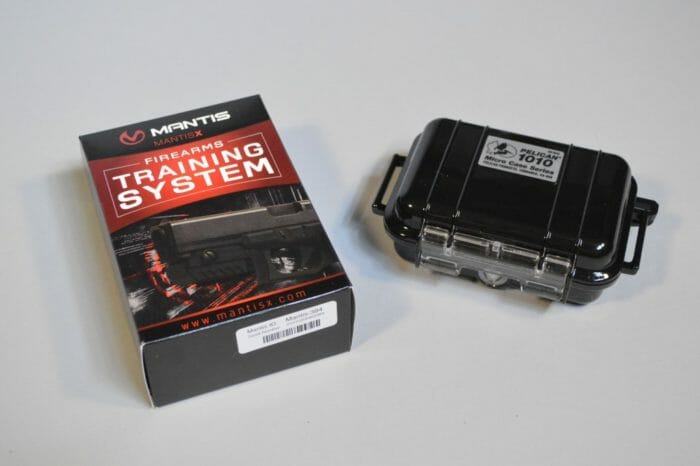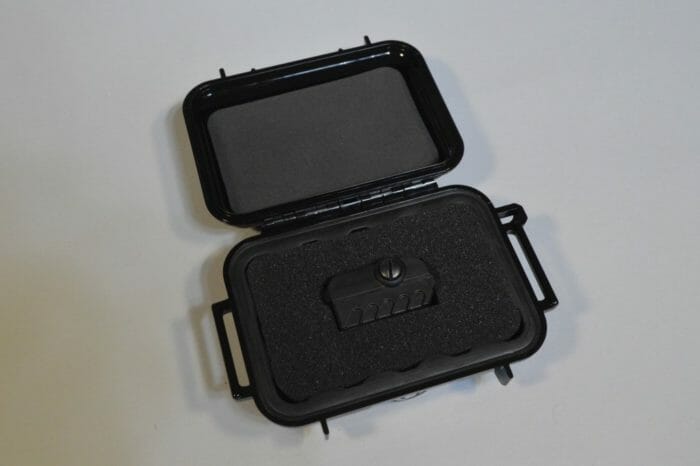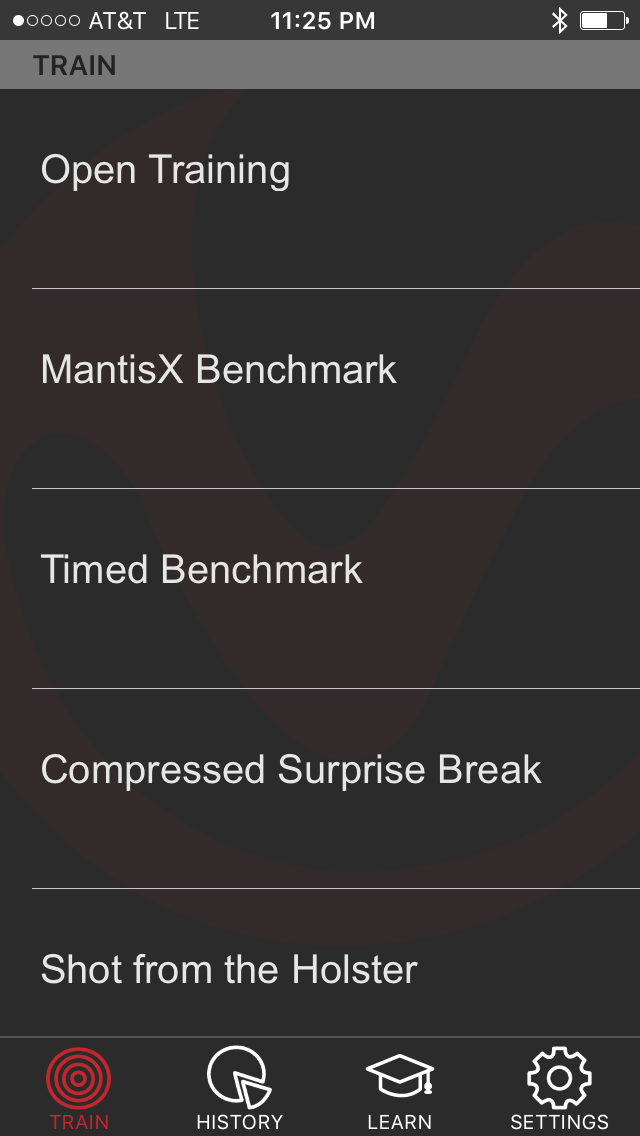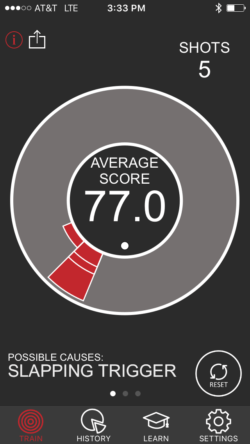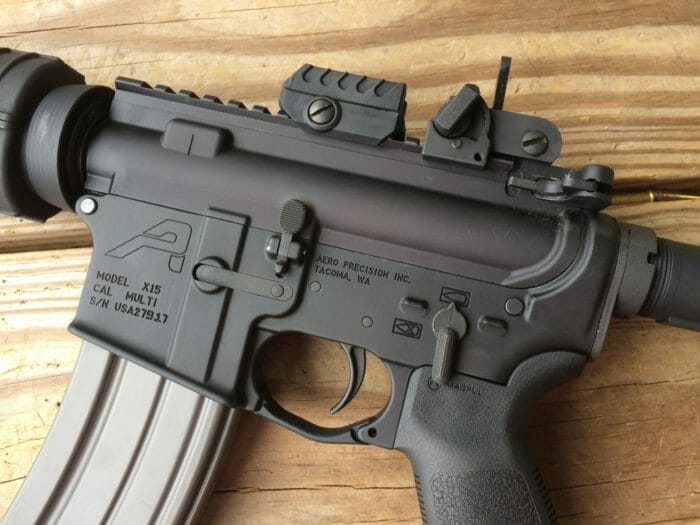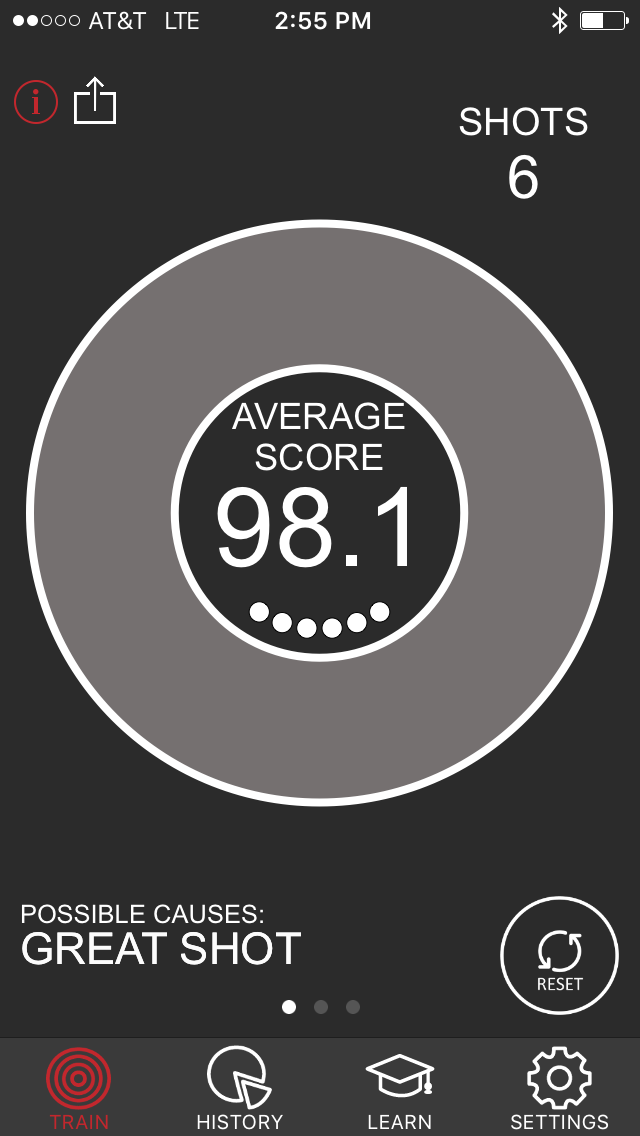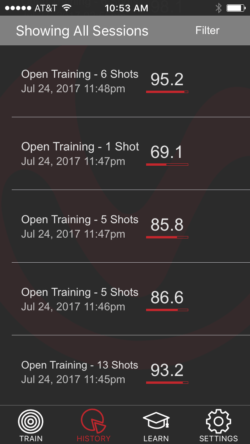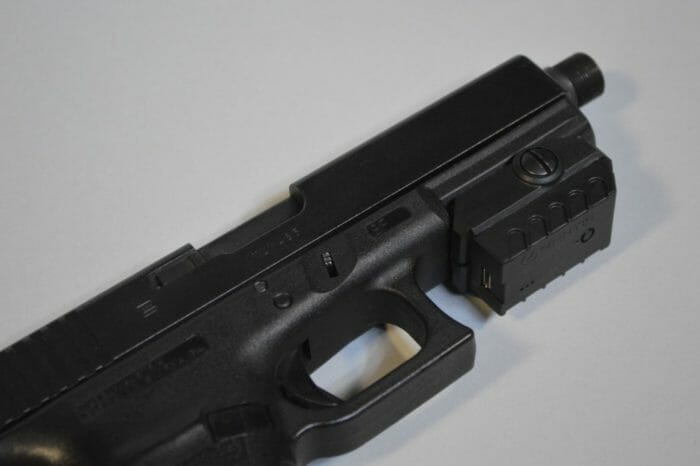MantisX Firearms Training System Review
As someone with a background in computers, I’ve always been intrigued by the ways enterprising companies incorporate technology into the firearms world. No, that doesn’t mean I find the damp squibs otherwise known as “smart guns” as anything more than novelties that make already dangerous implements even riskier by promoting a false sense of security and adding yet another point of failure. Rather, what I see as interesting are the numerous ways firearms companies have used technology to enhance gun ownership. Things like Silencer Shop’s kiosks and new barcode system come to mind. Likewise, other companies have developed ways to incorporate technology with training to help shooters develop their skills both at the range and at home.
Mantis’ MantisX has been one of the most popular training devices on the market since it arrived in early 2016. A small, rail-mounted sensor, the MantisX syncs with Apple and Android smartphones to provide visual feedback regarding the moments before, during, and just after trigger pull. It works both with dryfire practice and with live ammunition and can be used with long guns and pistols alike. Recently, Mantis offered to send me a MantisX for review and after roughly six weeks of using it, I’m ready to share my thoughts.
Getting Started
Inside the MantisX’s cardstock box, you’ll find a small Pelican 1010 case that’s sized perfectly for the device. There’s no doubt that Mantis’ product is well presented and the Pelican case does a fantastic job of protecting the unit during travel or storage. After all, you’re probably not going to leave the MantisX on your gun full-time. Joining the MantisX inside the case is an instruction pamphlet and a micro USB charging cable.
From the start, the MantisX takes very little time to setup. First, attach the ~1-ounce device to your pistol’s Picatinny rail (if your firearm doesn’t have a rail, Mantis offers several magazine baseplate adapters). The wedge-shaped end of the unit should face forward if possible. Depending on rail space and configuration, you may need to mount the MantisX reversed, but that’s no big deal. The app settings allow users to specify the device’s orientation. On a related note, I wish Mantis would have included a knurled screw with the MantisX, rather than the slotted one that they ultimately used. I find myself installing and removing the MantisX frequently, depending on whether I’m training or not, and it’s mildly annoying to have to use a tool to swap the unit out.
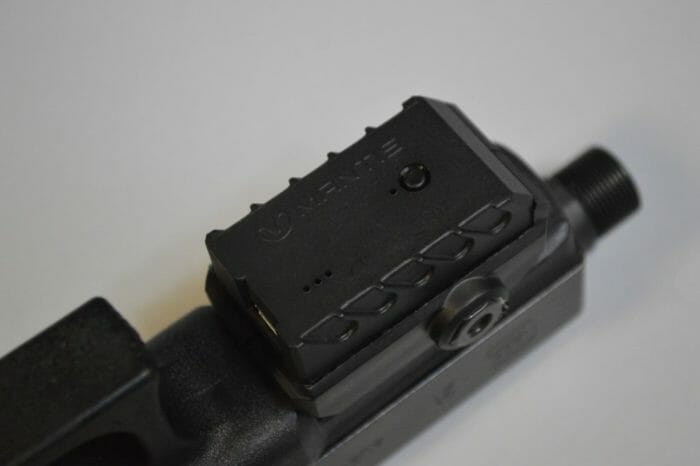

Next, head over to your phone’s app store and download Mantis’ app. Once that’s installed, start it up and you’ll be asked to pair the device (make sure your phone’s Bluetooth is active). Press and hold the button on the MantisX for a few seconds and it should sync with your phone. Once the MantisX and your phone have paired, you’ll be led to a menu with several different training options, including open training, one handed shooting, and shooting with reload. In each case, the app tracks movement during trigger pull, but some are timed while others simply track splits. For this review, I’ll exclusively show the open training mode. Lastly, the app will prompt you to set the firearm on a flat, stable surface for calibration. Set it down and you should be ready to rock in just a matter of seconds.
Dry Practice
The first firearm I used with the MantisX was my Glock 21SF and since I was home at the time, I started out with dryfire practice. As far as my personal handguns go, the Glock is relatively new – at least to me. I picked it up last year as a police trade-in and I’ve enjoyed it so far, but I haven’t put all that many rounds through it. With the MantisX app on the train tab, I pressed start to begin recording. Next, I fired five dry fire “shots”, taking care to focus on my trigger pull and grip. Immediately, I was surprised to see how accurately the MantisX detected each of my trigger pulls. The Mantis uses both a three-axis accelerometer and a gyroscope to detect movement, but keep in mind that without a live round in the chamber, the unit can’t cue off recoil for shot detection. Mantis has acknowledged that dryfire shot sensing is difficult and officially they claim 65% to 95% accuracy, depending on the firearm. On my Glock, it certainly hovered closer to 95% or better.
My results with this first test were eye-opening in a very good way. On the system’s 100-point scale, I averaged a solid 91.6. The MantisX scores each shot individually and provides feedback along the way, offering up possible reasons for even the slightest errors. At the end of your string, just press stop and the app automatically averages your scores. At the end of my first test, I was feeling pretty good about myself.


Before I move on, I should take a moment to go over the various ways the Mantis app presents collected data. The most basic screen and first of the group shows scores and split times. Swiping left shows the circular target with corrective feedback zones that correspond with each round’s point of impact and provide information about the errors that the shooter may have made. Next is a line graph showing each round’s score and a bar graph depicting movement during the hold and fraction of a second before pulling the trigger. The last page is a chart outlining the firearm’s point of aim before, during, and after the trigger break.
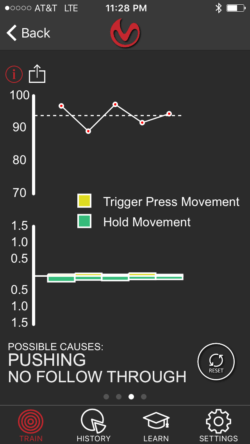
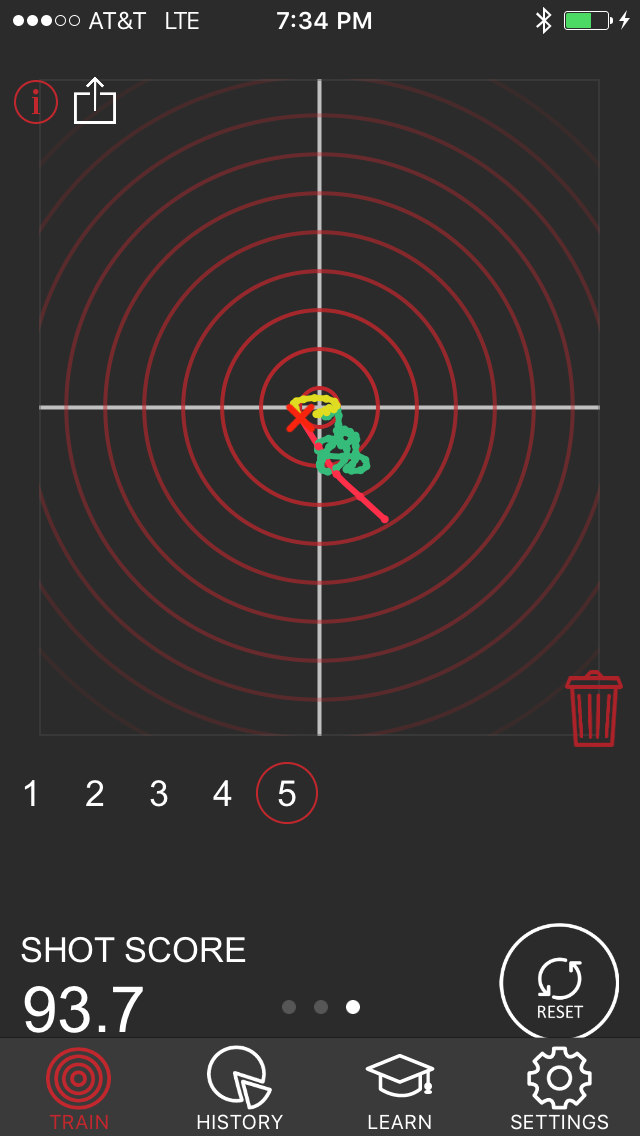
Range Time
Heading out to the range for live fire training was a reality check. In contrast to my superb dryfire score, my first five live rounds through the Glock averaged just 77. According to the app, my shots were almost all low and left of my intended point of aim and it suggested that I was slapping the trigger. It’s common for right-handed people to shoot low and left with Glocks as the consensus is that you should have “more finger” on the trigger of Austria’s ballistic workhorse than other handguns. However, I also feel as though I was anticipating the recoil of the .45 ACP round. The only real difference between my practice at home and my work at the range was the presence of live ammunition, so it serves to reason that I was letting expected recoil affect the quality of my trigger pull. Most importantly, by incorporating the feedback from the MantisX, I managed to bring my average scores back up into the low to mid-80s over the course of a single practice session, resulting in more accurate shooting. It’s incredibly interesting to see this sort of detailed feedback from a rail-mounted accessory.
After finishing up with my handgun shooting, I moved the MantisX over to my AR-15. Unlike the Glock, I had some flexibility here as far as mounting point was concerned. Ultimately, I placed it just in front of my rear sight, operating under the theory that any movement during my trigger pull would be more noticeable further back on the rifle than closer to the handguard or support point.
My experience with the rifle revealed that while the MantisX will work with long arms, it isn’t as well optimized for them. With a supported rifle, movement is often measured in minutes of arc (MOA) and usually no more than a few MOA at that. Mistakes that might result in an inch or so of inconsistency on the pistol bay could equate to five or six inches of dispersion on the rifle range. Over a six-round test group using my AR (yeah, another round slipped in there), I averaged a 98.1 on the MantisX. I performed the testing at a bench, but without my usual sandbag for support.
Despite my excellent rifle score with the MantisX, my group was average at best – roughly three MOA. That’s the challenge that the unit faces. Because the difference between a one MOA group and a three or four MOA cluster is so tiny when measured at the rifle, it’s almost impossible for the MantisX to detect. Moreover, there’s no reliable way the unit can ensure that point of aim remains consistent from shot-to-shot. The MantisX is a superb tool for unsupported rifle shooting or for correcting glaring mistakes, but it isn’t likely to turn subpar shooters into sub-MOA marksmen.
At the end of my range session, I had a bit of a scare. Suddenly, the MantisX and its app weren’t registering my shots. Both dryfire and live ammunition failed to register shots on the app. As it turns out, reality was far less dramatic. The unit simply needed to be charged and after spending some time plugged in at home, the MantisX came back to life.
Conclusion
I may have been skeptical at first, but the MantisX is a fantastic product. While I don’t see it as a replacement for more formal training, it is certainly capable of making most people better shooters, particularly with a pistol. I would like to see Mantis tweak the device to better serve rifle shooters, but I’m not sure there’s a realistic way to do so. Moving beyond the unit itself, the app-based approach is a brilliant way to maximize value. Not only is setup incredibly easy, Mantis can (and does) update the app to introduce new features and training scenarios. These additions are totally free and are automatically added as part of your phone’s application update procedure.
If you’re looking for a way to improve your pistol shooting, both at home and at the range, the MantisX is an excellent choice. At $150, it isn’t cheap, but it’s far more affordable than buying loads of ammo only to make the same mistakes over and over again.
An information security professional by day and gun blogger by night, Nathan started his firearms journey at 16 years old as a collector of C&R rifles. These days, you’re likely to find him shooting something a bit more modern – and usually equipped with a suppressor – but his passion for firearms with military heritage has never waned. Over the last five years, Nathan has written about a variety of firearms topics, including Second Amendment politics and gun and gear reviews. When he isn’t shooting or writing, Nathan nerds out over computers, 3D printing, and Star Wars.

